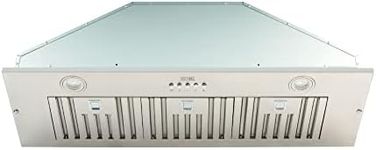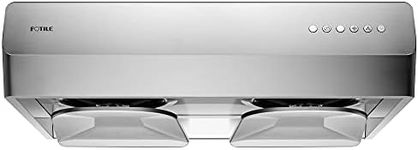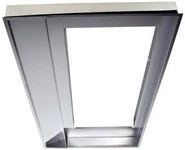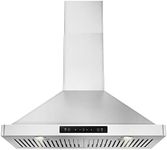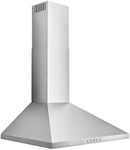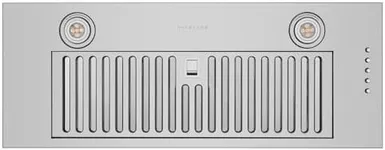Buying Guide for the Best Quiet Range Hoods
Choosing a quiet range hood is all about finding the right balance between effective ventilation and minimal noise. A range hood helps remove smoke, odors, and grease from your kitchen, but if it's too loud, it can make cooking unpleasant. To pick the best fit, you need to understand the key features that affect both performance and noise level, and match them to your kitchen size and cooking habits.Noise Level (Measured in Sones or Decibels)Noise level tells you how loud the range hood will be when it's running. It's usually measured in sones or decibels (dB). Lower numbers mean quieter operation. For example, 1-3 sones (or under 50 dB) is considered very quiet, 4-6 sones is moderate, and above 6 sones can be quite loud. If you cook often and want to chat or listen to music while cooking, aim for a hood with a lower noise rating. If you only use your hood occasionally or for short bursts, a slightly higher noise level might be acceptable.
Airflow (CFM - Cubic Feet per Minute)Airflow, measured in CFM, shows how much air the hood can move in a minute. Higher CFM means more powerful ventilation, which is important for heavy cooking or larger kitchens. For light cooking or small kitchens, 150-300 CFM is usually enough. For regular or high-heat cooking, 300-600 CFM is better. Over 600 CFM is for very large kitchens or professional-style cooking. Remember, higher CFM can sometimes mean more noise, so look for models that balance both.
Fan SpeedsFan speeds let you adjust how hard the hood works. More speed options give you better control over noise and ventilation. Basic models may have just two speeds (low and high), while others offer three or more. If you want to keep things quiet most of the time but need extra power occasionally, look for a hood with multiple speed settings so you can use a lower, quieter setting for everyday cooking.
Mounting TypeThe way a range hood is installed—under-cabinet, wall-mounted, or island—can affect both noise and performance. Under-cabinet and wall-mounted hoods are common and can be quieter if installed properly. Island hoods, which hang from the ceiling, may be a bit noisier because they are more exposed. Choose the mounting type that fits your kitchen layout and consider how the installation might impact noise levels.
Ducted vs. DuctlessDucted hoods vent air outside, which is usually more effective and can be quieter because the fan doesn't have to work as hard. Ductless hoods filter and recirculate air back into the kitchen, which can be convenient but may be a bit noisier and less effective at removing strong odors. If you want the quietest and most efficient option, go for a ducted hood if your kitchen allows for it.
Filter TypeFilters trap grease and other particles. Metal baffle or mesh filters are common and easy to clean, while charcoal filters are used in ductless models to help with odors. Clean filters help the hood run more quietly and efficiently. If you want less maintenance and quieter operation, look for easy-to-remove, dishwasher-safe filters and remember to clean them regularly.

